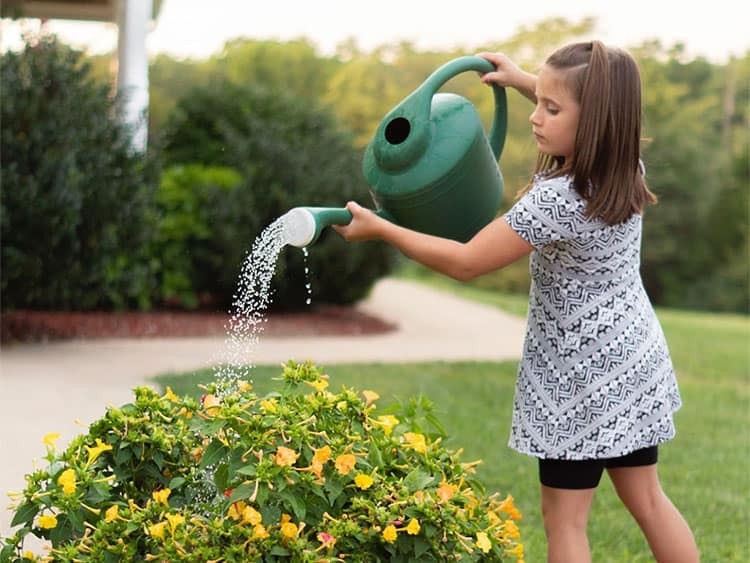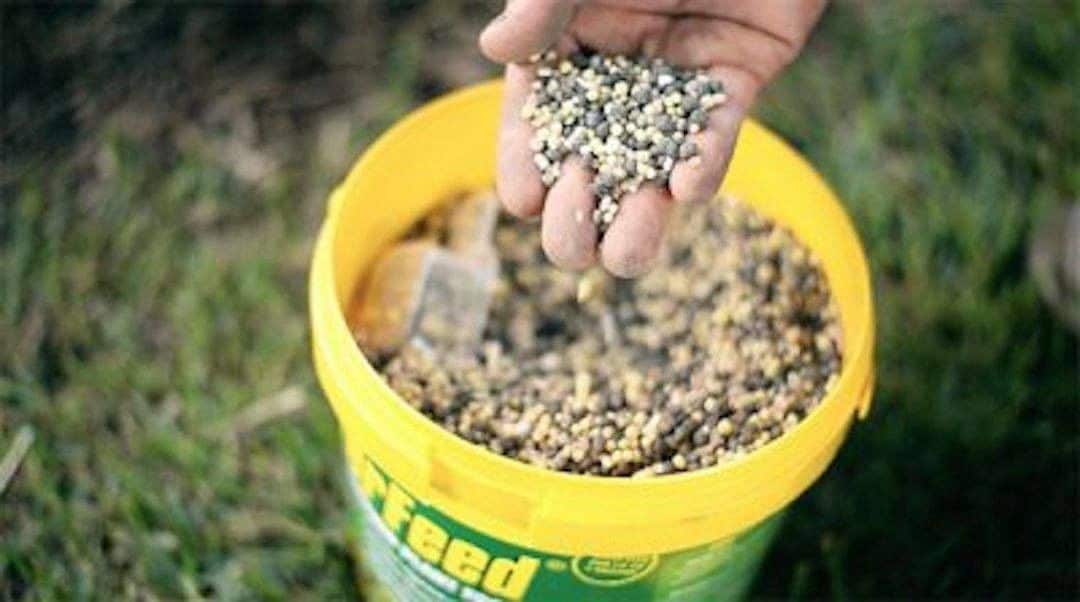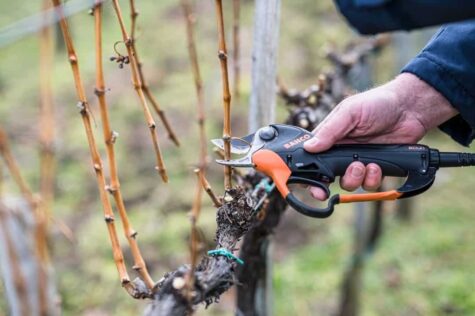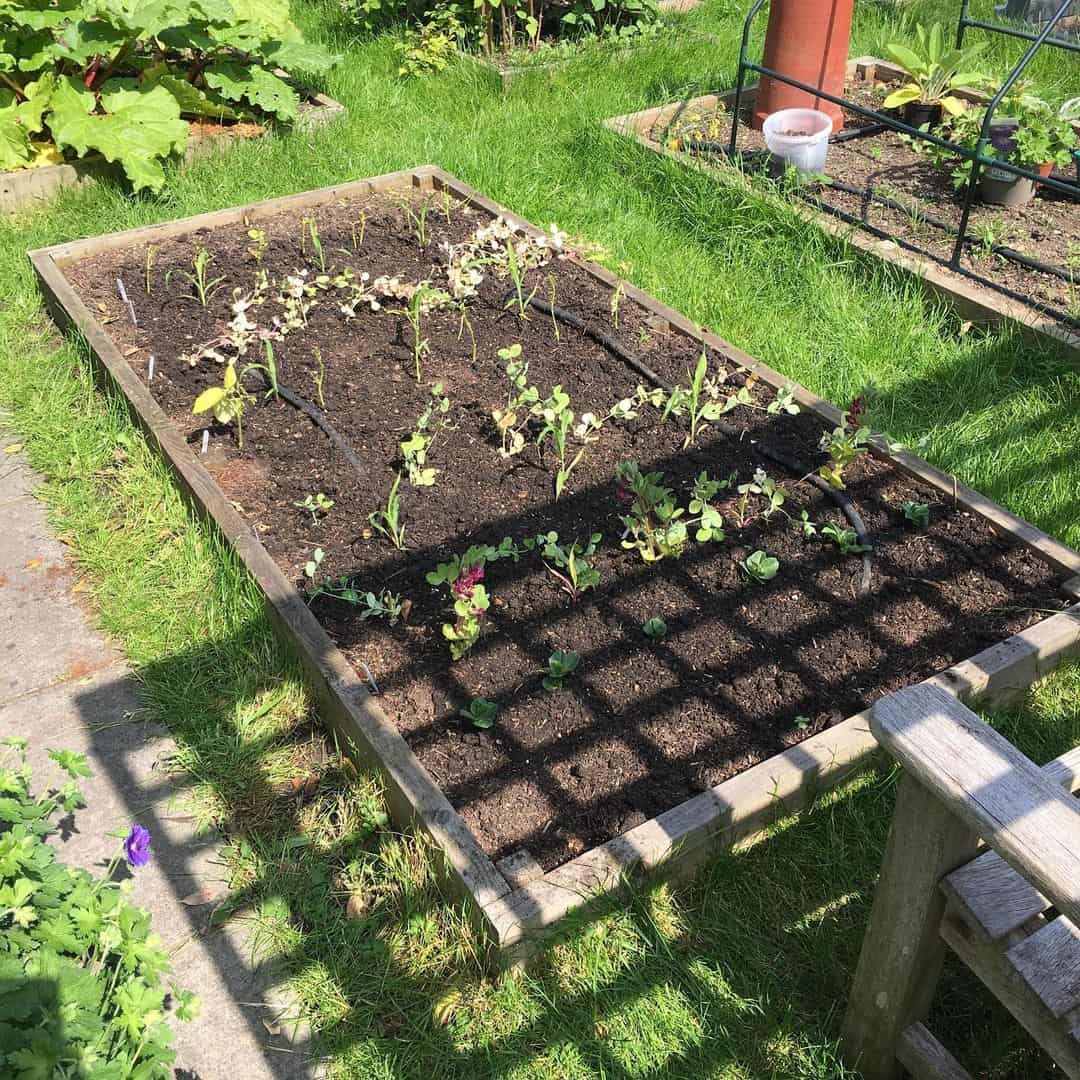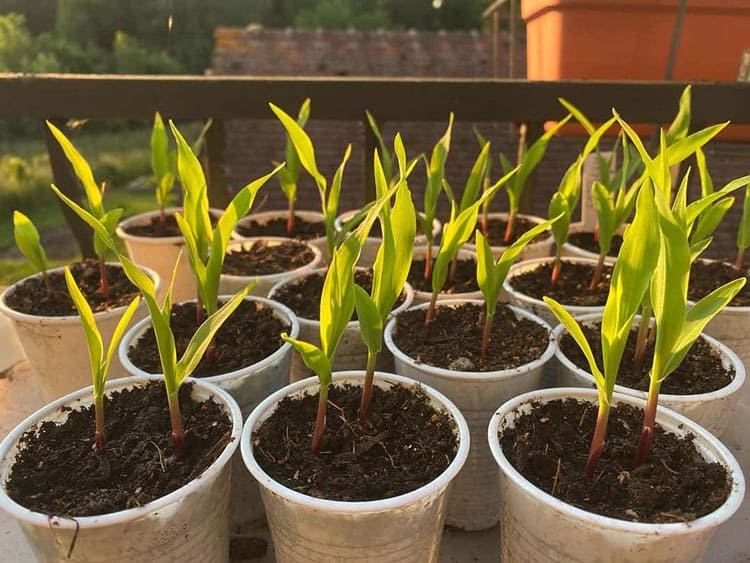As the days lengthen during the month of March, warmer sunny days can fool us into thinking the summer has arrived. In reality, daytime temperatures can be high but the evenings and nights are still very cold. So enjoy the daffodils in bloom but keep the greenhouse door closed when it gets dark.
Right now, there are lots of jobs to be done both indoors and outdoors:
Indoor gardening jobs

Image credit: @our_gardening_adventure
- Wash plant pots to ensure that last year’s soil and roots are removed. Fungus and disease can survive in pots over the winter so give them all a good scrub, ready for new seedlings.
- Sow summer crops like tomatoes, cucumbers, salads, carrots and herbs inside. If you have a vegetable plot, then you can get an early start with peas too. Transplant them into the garden when they are large enough for an early crop.
- Get your greenhouse ready. It’s important to get the glass sparkling clean, remove moss, and relocate any lurking slugs and snails before they eat your first seeds. Dig over the soil and remove any weeds. Add some manure or new compost to ensure your plants have enough nutrients to grow strong this season. If you grow comfrey, pick some leaves now and allow them to decompose on the surface of the soil as these release nitrogen and other beneficial elements for your plants.
- Start dahlia tubers in pots of compost on a warm sunny windowsill or in a greenhouse. Remember that the new stem comes from the pointed end of the dahlia so keep this skyward. Dahlias like to be snug – they need a minimum temperature of 16C.
Outdoor gardening jobs

Image credit: @thegardenguruandassociatesltd
If you’re wondering what to do in the garden in March, there’s plenty to keep you busy:
Get lawns in shape. Rake the lawn well and mow it for the first time since last autumn.
- Set the blades to a high setting.
- If worm casts are a problem, scatter them by brushing a broom gently to move them.
- This is also the time to edge the lawn, so get your tools sharpened and do it on a sunny day.
- It’s a good idea to observe if there are puddles of water in any particular area. If so, you can spike these to improve drainage.
- If moss is a problem, it needs to be dug out completely and replaced with fresh soil and seeds. Have some grass ready to transplant for problem spots by seeding some now.
- You can leave the first cut grass to rot back down as feed if you like. It provides a mulch of goodness that rots quickly and adds nourishment to the ground.
Prune roses, fuschias and hypericums. To keep the shape of your favourite roses, you need to prune them every year. Some gardeners like to prune hydrangeas now too but I advise waiting until the frost has gone. Where I live, frost can still occur in May so enjoy the hydrangea’s dried flower heads and cut them after the last frost. Hypericums can also be pruned if you have a shrub type. Cut out dead branches and take a good look at its shape. If you want to prune it hard, now is the time to do so. Hardy fuschias will benefit from removing any crossed branches that flowered last year. Cut them back hard to the base and remove any weak shoots.
Plant summer flowering bulbs. Snowdrops, snowflakes and grape hyacinths have all flowered by now and daffodils and narcissi are in full bloom. There’s still time to plant bulbs that will flower in the summer. Alliums provide wonderful purple seed heads which attract swarms of bees and pollinators. Lilies, freesias and ixias can be planted now too. (See detailed instructions for bulb planting below). You can also plant snowdrops or snowflake bulbs for next year and you’ll be rewarded for your efforts next spring.

Plant allium bulbs for glorious summer colour. Image credit: @willowcreekblooms
Take root cuttings of Cornus alba, buddleia and jasmine. Dip these in hormone rooting gel or place them in a jar of water and wait for roots to appear. As soon as they do, it is safe to plant them on into pots of soil.
Sow hardy annuals outside in the south of England but if you live further up north or it is still very frosty in your area, wait for a warmer day. Dig the soil a little. If it feels warm, that’s a good guide. If it is difficult to dig, then wait for sunnier days.
Deadhead irises that have flowered and remove any brown stalks. Any Dutch iris planted in flower beds may need to be covered with cloches or fleece if the weather is harsh.

Image credit: @siberian_iris_lover
Plant indoor hyacinths outside. Hyacinths that were forced into winter-flowering can be planted out in the garden now. Put them somewhere close to where you normally sit so that their heavenly scent can fill the space. Great while you have a cup of tea!
Mulch perennials. March is a good month to add some nourishment to the soil for the next season’s growth. Apply a layer of manure, leaf mould or compost. Dahlias and other plants that have over-wintered in the ground will thank you for it!
Divide herbs like mint, lovage, tarragon, rosemary and thyme. Lift the whole plant and then use sharp pruners to divide the roots into sections. You can use a spade to do this if the roots are extensive. Mint, rosemary and thyme are hardy but lovage and tarragon need to remain indoors until it is warmer. Remember that mint can be invasive so plant it back into a container. For other plants, re-pot the sections into new soil and pots and water them well. These divided sections are great presents for newbie gardeners. Who wouldn’t love a gift of French tarragon or lovage to add some spice to their culinary creations?

Divide and repot herbs for the perfect gift. Image credit: @york_christi
Crumble your leaf mould. If you saved your autumn leaves, you’ll now have a bag of goodness waiting to be sprinkled over pots and the soil. When you empty the bag, you’ll probably find lots of wriggling worms who have found their way in to nibble the leaves. The leaf mould should be well rotted and dry. You can crumble it between your fingers and add to new seedlings or use it to top up pots with a layer of goodness. Keep empty soil bags for use in the autumn to make more.
Fruit and vegetable garden jobs

Broad beans should be ready to plant out now. Image credit: @meg_grows_veg
Last month I suggested warming up the soil by placing plastic or architectural fabric over the ground before planting. So the first task in March is to remove it and check for any slugs and snails underneath. This ground is perfect for planting peas and broad beans right now. Read on for a list of other jobs in the vegetable garden:
- Weed around leeks; these are almost at the end of the season so pick any thick stems and keep the remainder weed-free to encourage them to grow.
- Apply manure to the asparagus bed if you haven’t already. They will soon start to sprout so weed carefully and be careful not to dig too deeply at the roots. Asparagus is very picky about root disturbance so just keep an eye out for new shoots and keep the weeds at bay by cutting them at ground level until after harvesting.
- This is the time to examine your brassica stems like cabbage or sprouts if they have already produced greens for the table. After cutting, you can leave the stem a little longer to produce some tasty, winter greens. See tips below about leaving brassicas in the ground for a bit longer after you cut the first sprouts.
- If you haven’t cut autumn fruiting raspberries to the ground, now is the time to do so.
- Plant rhubarb from rootstocks. If you’re new to rhubarb growing, you can buy a new plant but if you have an established one, you can divide it. Plant them firmly into the ground and water well particularly if the soil is dry. Not likely in the UK in winter but you never know!
Tina’s Tips:
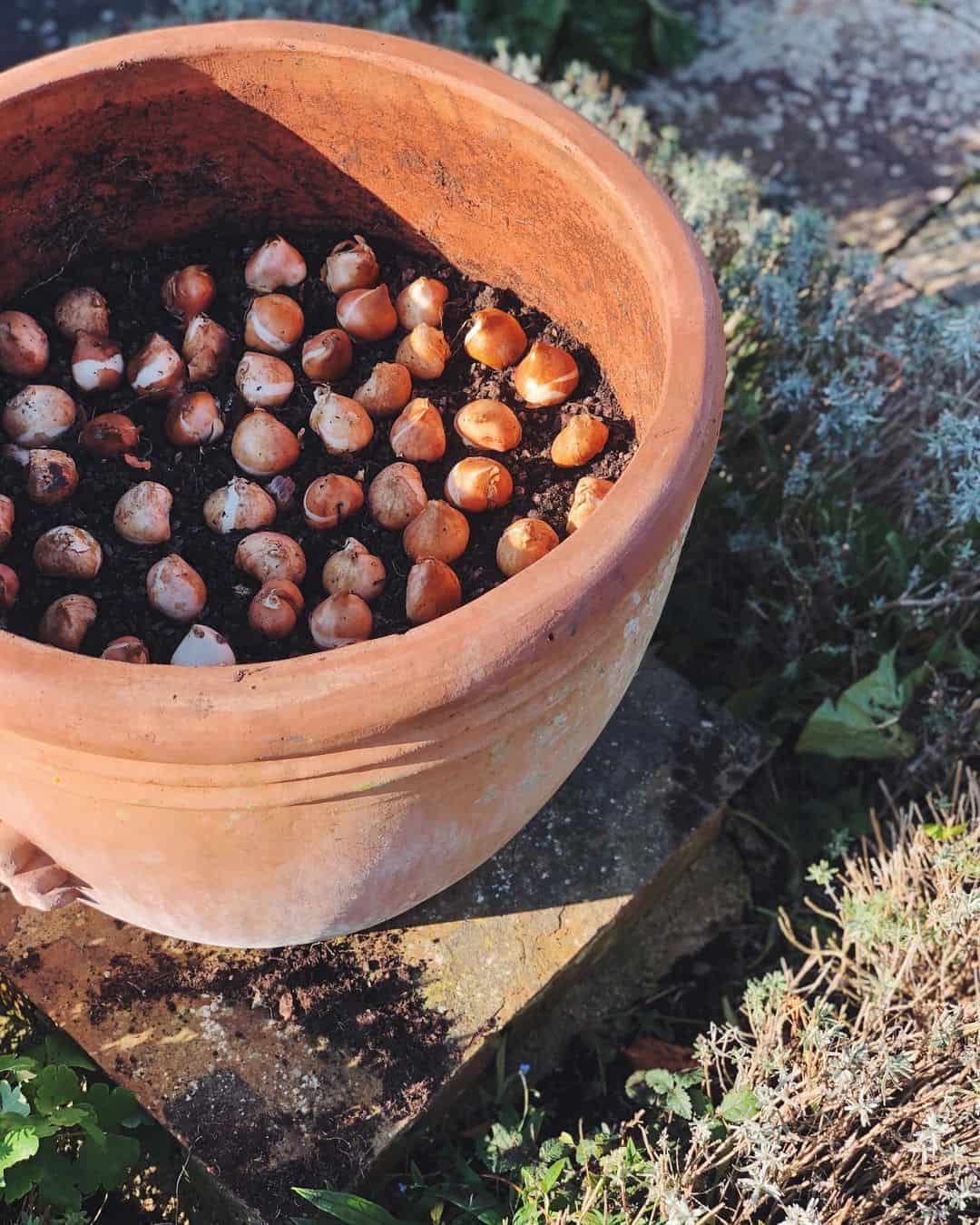
Image credit: @freddiestricklandgardens
How to plant bulbs
- Dig a space twice as deep as the width of the bulb and remove any weeds.
- Sprinkle a layer of compost, manure or general slow-release fertiliser to feed the bulb after it flowers. Cover with a thin layer of compost.
- Water the bulbs in well. Keep watering until the flowering season.
Brassica tips
When you cut a cabbage, leave the stem in place because often, the plant will continue to grow and you can pick more leaves for a tasty stir fry later in the month. If you cut sprout tips, the pruned cut will also grow new leaves. These are delicious fried with black pepper and butter and served with cheese and bread for a tasty lunch.

Save this pin for later

